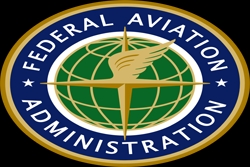Culver City’s decision to challenge the Federal Aviation Administration over planned changes to flight paths in the region is the latest Westside city to seek legal relief from the court system over policies that they deem harmful to their constituents.
But they can look no further than their neighbor to the west, Santa Monica, to see that suing the FAA is not an easy proposition.
Santa Monica has filed several lawsuits against the FAA since 2007 and has only been successful one time: in a May 16 appeal over ownership of the city’s general aviation airport.
Santa Monica is currently attempting to close the Santa Monica Airport and the federal agency has vowed to contest that action.
Culver City’s decision to file the appeal with the Ninth Circuit Court of Appeal on Oct. 28 seeks to contest the environmental analysis of the federal government’s Southern California Metroplex system, which will replace dozens of existing conventional air traffic control procedures with new satellite-based procedures.
The Next Generation Airport Transportation System will consist of 41 new departures, 37 arrivals and 21 approach procedures that guide aircraft.
Culver City officials contend that the environmental analysis neglected to analyze several critical factors.
“The city believes there are significant errors in the SoCal Metroplex [review], which will result in further impacts to residents, who already have experienced an increase in noise and air pollution from planes flying at lower altitudes along narrowed flight paths,” states a city press release.
“We invite other jurisdictions that are also impacted to join with us in our efforts, requesting the FAA to recognize that communities around the country are subject to these negative consequences. Our hope is the FAA will work with us and other communities to mitigate the serious impacts on our residents’ quality of life from these flight path changes.”
The FAA denies that any over flights are not connected to the Next Generation project.
A report from a noise and aerospace consultant hired by Culver City last year indicated that several neighborhoods had experienced an increase in overflights.
Carlson Park saw the largest increase at or below 6,000 feet from 2010 through 2012. “Those flights increased from 615 in the year 2010 to 1,234 in 2012, or a doubling of flights at or below 6,000 feet,” the report states.
“Our residents have already experienced a significant impact on their quality of life from current flight path changes. The citizens and businesses of Culver City deserve a full analysis and discussion of the location, altitude, and impacts of these new approach and departure procedures created by the Project, which are absent from the FAA’s Environmental Assessment,” said Culver City Mayor Jim Clarke after the appeal was announced.
Jay Garacohea, who ran for a seat on the City Council in April, was one of three other candidates who expressed reservations about a suing the FAA.
“We’re already spending money on a [noise and aerospace} consultant to monitor noise. I think the community should get together and join other cities that might be suing at a later date,” Garacochea stated. “In the long run if we sue, it’s going to be an extreme waste of money.”
Other cities who have taken on airports and the FAA have reached settlements instead of going to trial or prevailing on appeal.














